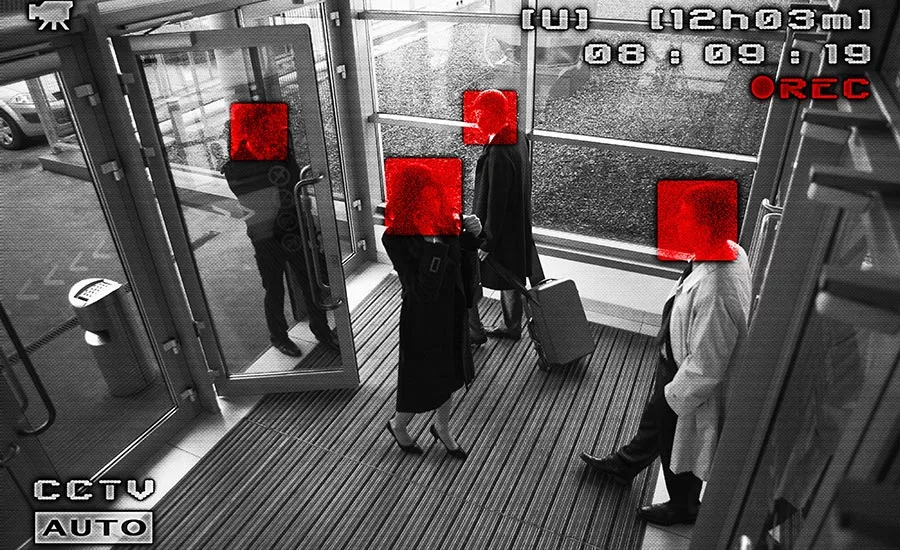Leadership & Management
Every breath you take, they’ll be watching you


A couple of months ago, I described in this column how security professionals could unify a divided country. I chose a mask as a symbol of that cohesiveness. But that thin piece of fabric worn around the mouth and nose can also be a gag — a barrier that distances leaders and stifles communication.
Consider the famous quote by Thomas Edison that, “Genius is 1% inspiration, 99% perspiration.” The corollary might be that leadership is 1% perspiration, 99% inspiration. Inspiration, which comes from the Latin for “breathing life into,” means infusing someone with an animating influence — literally passing on part of one’s life spirit. It connotes physical and spiritual closeness.
The definition points up how much more difficult leadership has become when distance separates us. Masks have become both physical and figurative obstacles. Instead of poking our heads into our neighbors’ offices, we stand apart warily, like gunslingers at a showdown on a dusty Old West road. Or we rely on technology. We do video calls on Skype, FaceTime or Zoom. We collaborate on apps such as Asana, Slack and Microsoft Teams. We network via LinkedIn and Eventbrite. We share information via tweets and Facebook posts.
In fact, on my phone someone can contact me in 31 different ways, including via WhatsApp, Viber, Notion and Instagram. That doesn’t include a seemingly infinite number of other ways specific people or organizations can reach me via apps, including security professionals (ASIS, SIA, etc.) banks, teammates (TeamSnap), clients (Google Hangouts), motorists (Waze), airlines, utilities, and on and on. Every buzz on my phone sends me into a frantic, labyrinthine search for the app that seeks my attention.
Apps certainly have their place. Their platforms create communities and communication channels and offer a lifeline during a pandemic. But the technology is only a means to the end. It doesn’t substitute for a spontaneous cup of coffee with a colleague in the breakroom. And it is not a stand-in for leadership.
So how can we breathe exhilaration and motivation into our direct reports at a distance?
A recent EY report proposes a four-tier framework for leading remote teams: Connect and personalize, listen and collaborate, support and focus, and lead by example.
To personally connect, great leaders sweep away the clutter and communicate without filter. Some check in with their reports weekly for at least 15 minutes at a time — in person with proper safety protocols or via video call. They may match staff mentors with proteges or reserve time for drop-ins.
Listening and collaborating can include using pulse surveys in meetings to monitor staff mood, routinely soliciting feedback about processes, and providing updates about management decisions and actions.
To support and focus, leaders might review workloads and assignment priorities, expand coaching, and encourage and model practices for self-development and health.
Finally, among the many ways EY recommends to lead by example, leaders could conduct remote all-staff meetings to address workers’ questions and concerns, share their own stories and insights about working from home, and send a surprise note of kindness or recognition daily to a staff member. That’s inspiration.
By contrast, the worst leaders drain staff of vitality. A poor leader is remarkably similar to a Dementor in the Harry Potter series: “Get too near a Dementor and every good feeling, every happy memory will be sucked out of you. If it can, the Dementor will feed on you long enough to reduce you to something just like itself…soulless and evil. You will be left with nothing but the worst experiences of your life.”
Leadership means energizing your staff, not enfeebling them. And that’s done by inspiring them — by being open, authentic, and the first to step in.
A word of caution about inspiration, however. As the editors at Merriam Webster point out, the word shares part of its history with another term that means exhalation of air: flatulent. A poor leader’s effort to inspire can come out the wrong way, so to speak. And we end up where we started: covering our mouth and nose.
Looking for a reprint of this article?
From high-res PDFs to custom plaques, order your copy today!







